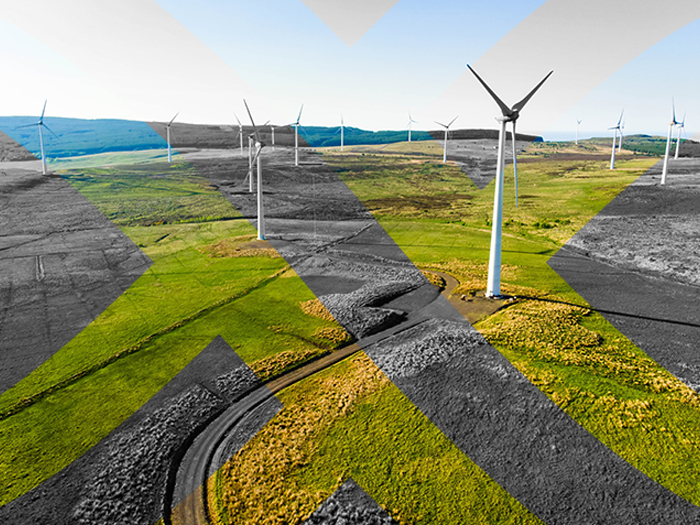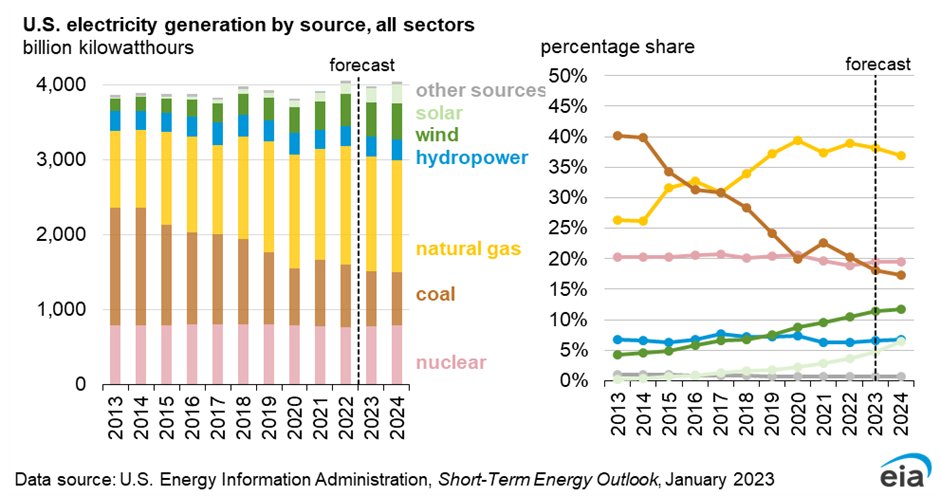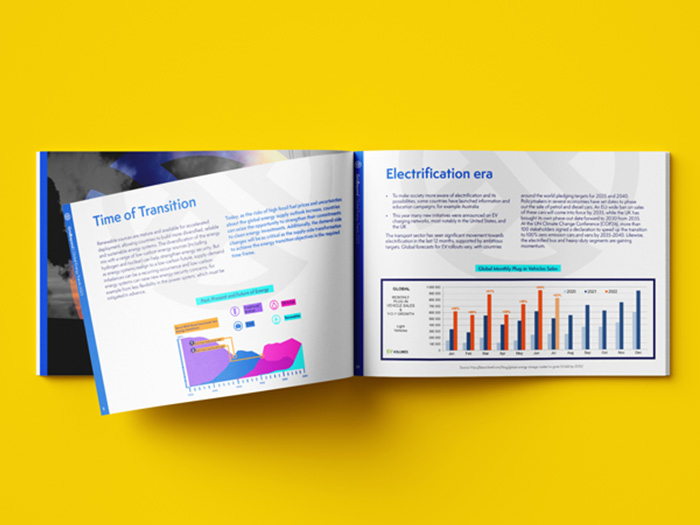Insights
better business decisions
Posted 2 years ago | 2 minute read

Renewables set to be the main contributor of growth in US power generation
Renewable energy sources will be the main contributor of growth in U.S. electricity generation. U.S. renewables generation is forecasted to rise from 21% in 2022 to 24% in 2023 and to 26% in 2024, the Energy Information Administration (EIA) has said.
In its latest short-term energy outlook, published on January 10, the EIA predicts total consumption of electricity is expected to remain fairly stable, falling by 1% in 2023 and then growing by just over 1% in 2024 – compared to a 3% increase in 2022. Most of expected change in electricity demand occurs in the residential sector.
Expected electricity generation largely follows consumption trends, declining in 2023 then rising in 2024. Generation from renewable sources is the main contributor of growth in US generation. The forecast share of U.S. renewables generation rises from 21% in 2022 to 24% in 2023 and to 26% in 2024. About two-thirds of this forecast increase in renewables generation comes from new utility-scale solar photovoltaic capacity, and most of the rest is from new wind projects.
The share of electricity generation supplied by natural gas to decrease from 39% in 2022 to 38% in 2023 and 37% 2024 while the share of electricity generated by coal will fall from 20% in 2022 to 18% in 2023 and 17% in 2024. Nuclear power generation remains close to 19% over the next two years.
According to the outlook, power generators plan to add 32GW of utility-scale solar photovoltaic (PV) in 2023 and another estimated 32 GW in 2024. It forecast that small-scale solar capacity will grow by 9GW in 2023 and by 12GW in 2024. Wind capacity increases by 6GW in both 2023 and 2024. Battery storage additions to capacity are 10GW in 2023 and 9GW in 2024.


White Paper Global Energy trends 2023 – Crisis, contingencies, and climate change
In this white paper, we shine a light on the biggest challenges and opportunities facing the sector over the next 12 months as participants of all types plan and execute their decarbonisation strategies during the current energy crisis. We also examine key trends that commentators – including GridBeyond’s experts – agree will be at the forefront of discussions and developments in the energy sector in 2023 and beyond.
Learn more